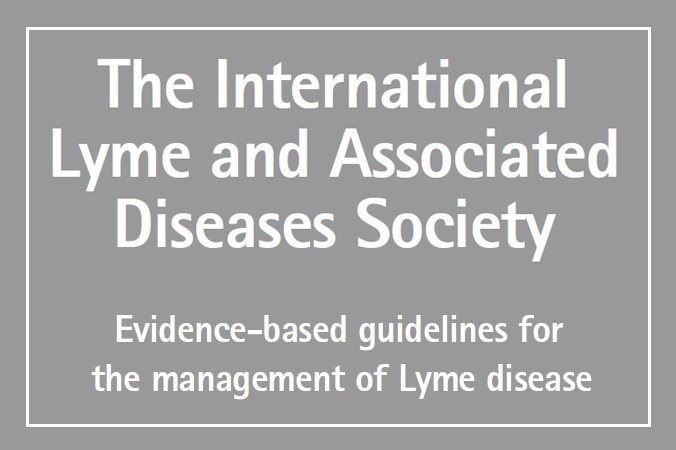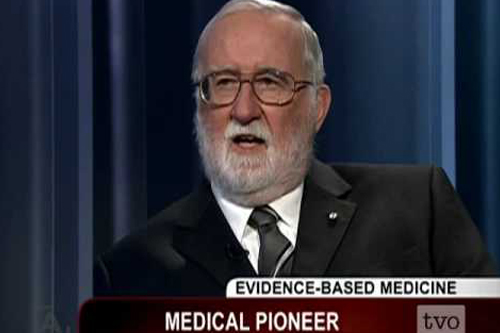2004 ILADS Lyme Disease Treatment Guidelines

Physician demands for better outcomes Lyme disease manifestations led to the development of the ILADS treatment guidelines.
Practice treatment guidelines serve as a guide for doctors for the appropriate treatment. Using the best available evidence, the International Lyme and Associated Diseases Society (ILADS) expert panel identified and developed practice recommendations for Lyme disease in 2004.
Authors
Cameron DJ, Gaito A, Harris N, Bach G, Bellovin S, Bock K, Bock S, Burrascano J, Dickey CE, Horowitz R, Phillips S, Merr-Sherrer L, Raxlen B, Sherr V, Smith H, Smith P, Stricker R. International Lyme and Associated Diseases Society (ILADS), Bethesda Maryland
Download 2004 Lyme Treatment Guideline
ILADS’ Lyme Disease Treatment Guidelines address 45 subjects:
• Chronic Lyme disease: A growing epidemic
• The need for new guidelines
• A problem of definitions
• Competency and training
• The increasing role of primary care
• Highlights of guidelines
• Symptomatic presentations
• Symptoms of Lyme disease
• Increasing evidence of persistent infection
• Disappointing results of symptomatic treatment
• Severity of chronic Lyme disease
• Atypical early presentations
• New chronic Lyme disease presentations
• The limitations of physical findings
• Sensitivity limitations of testing
• Seronegative Lyme disease
• Continued importance of differential diagnosis
• Clinical judgment
• Testing for coinfection
• Prompt use of antibiotics
• Choosing an antibiotic
• Intravenous antibiotic options
• Intramuscular antibiotic options
• Combination antibiotic treatment
• Sequential treatment
• Dosage
• Duration of therapy
• Empiric treatment
• Persistent Lyme disease
• Recurrent Lyme disease
• Refractory Lyme disease
• Treatment failure
• Symptomatic treatment
• Fibromyalgia
• Decision to stop antibiotics
• Alternative antibiotics
• Therapy for coinfection
• Ongoing development of treatment guidelines
• Validation of guidelines
• Comparative studies
• Grading system for evidence-based guidelines
• Comparison of key IDSA and ILADS guidelines
• Criteria for evidence-based guidelines.
The 2004 highlights included:
- Laboratory testing is meant to contribute to rather than to supersede a physicians’ judgment.
- Clinical judgment is necessary to identify individuals who may benefit from antibiotics to avoid preventable persistent, recurrent, and refractory Lyme disease.
- Empiric treatment should be considered as routine treatment of patients for whom Lyme disease is a likely diagnosis.
- The previously recommended practice of stopping antibiotics to allow for a delayed recovery is no longer recommended for patients with persistent, recurrent and refractory Lyme disease.
- Duration of therapy should be guided by clinical response rather than any arbitrary 30-day treatment course.
- A reasonable course would be to continue therapy to treat Lyme disease, after clinical and laboratory abnormalities are resolving and symptoms have resolved.
- Indications for retreatment should be broadened from meningitis, heart block, and arthritis to include symptomatic presentations.

Benefits of Lyme Research
Through LDPR, patients gain access to clinical trials by the same doctors who are treating them, and they are often among the first to receive new, proven therapies for their disease. more

Treatment Guidelines
Practice treatment guidelines should summarize the best evidence. Unfortunately, the 2000 and 2006 Infectious Diseases (IDSA) Guidelines did not reflect the EBM that our practice follows. more

2014 Treatment Guidelines
Practice treatment guidelines serve as a guide for doctors for the appropriate treatment. Using the best available evidence, the International Lyme and Associated Diseases Society (ILADS) expert panel identified and developed practice recommendations for Lyme disease in 2014 more



